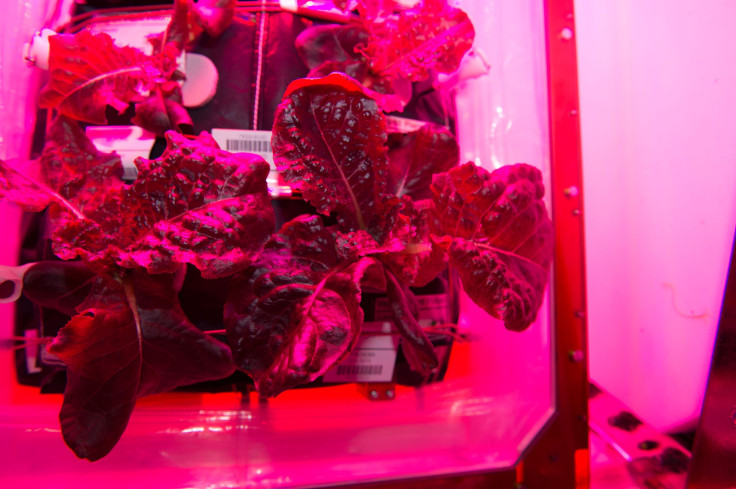'Outredgeous' Red Romaine Lettuce, Grown Aboard The International Space Station, To Be Taste-Tested By Astronauts

Growing food on Earth is pretty tough. You have to have the right soil, air temperature and quality, as well as the drive to water and prune your food as it grows. But with all that hard work comes the knowledge that the food on your table is something that you nurtured from the ground up. Now, imagine trying to grow that same food, but 200 miles above the Earth’s surface, orbiting at 17,500 miles per hour, in zero gravity.
Astronauts above the International Space Station (ISS) have done just that and will soon taste test the fruits (actually, veggies) of their labor. Expedition 44 crew members, including NASA’s one-year man Scott Kelly, have harvested a crop of “Outredgeous” red romaine lettuce using the Veggie plant growth system aboard the ISS.
The Veggie plant growth system provides lighting and nutrient supply for a space garden, supporting a variety of plant species that can be cultivated for educational outreach, fresh food, and even recreation for crew members on long-duration missions. This will help astronauts to eat vegetables with the essential vitamins and nutrients that will help with sustainable, deep-space pioneering, like a trip to Mars, for instance.
Before consuming the vegetables, the astronauts will use citric acid-based, food-safe sanitizing wipes to clean the vegetables off. They won’t eat all they’ve grown, however; half of the lettuce bounty will be frozen and sent back to Earth for testing.
The plant experiment, called Veg-01, is being used to test the in-orbit function and performance of the Veggie plant growth system and its rooting “pillows,” which house the plant seeds. The first pillows were activated, watered and grown by Expedition 39 flight engineer Steve Swanson in May 2014. Those plants were taken back to Earth and underwent food safety analysis. The second plant pillows spent 15 months on ISS and were grown for 33 days by Kelly before being harvested.



























